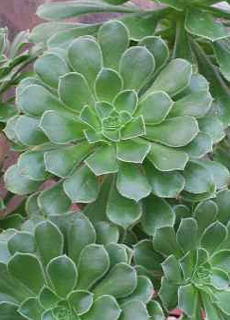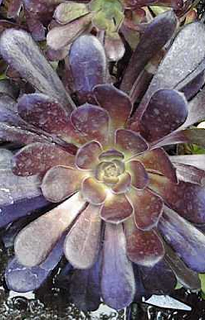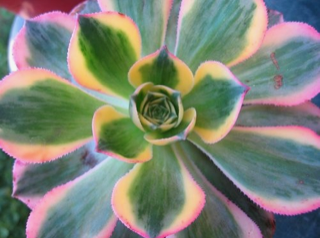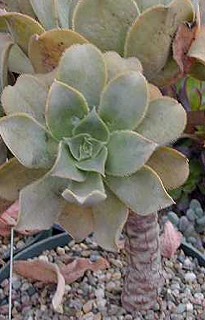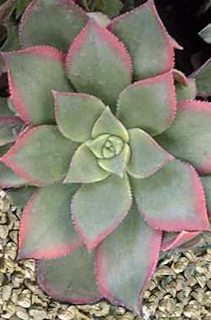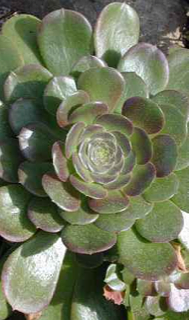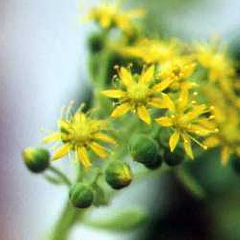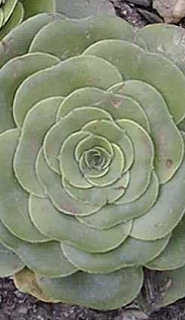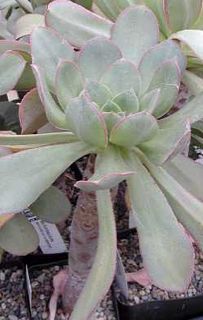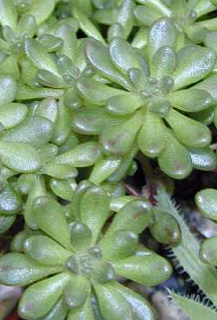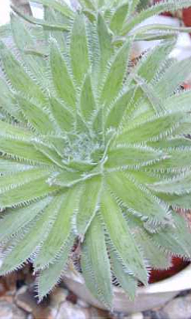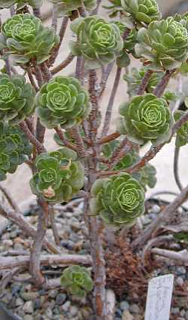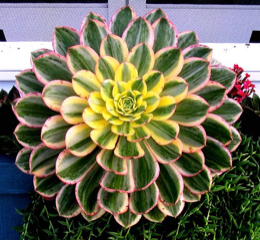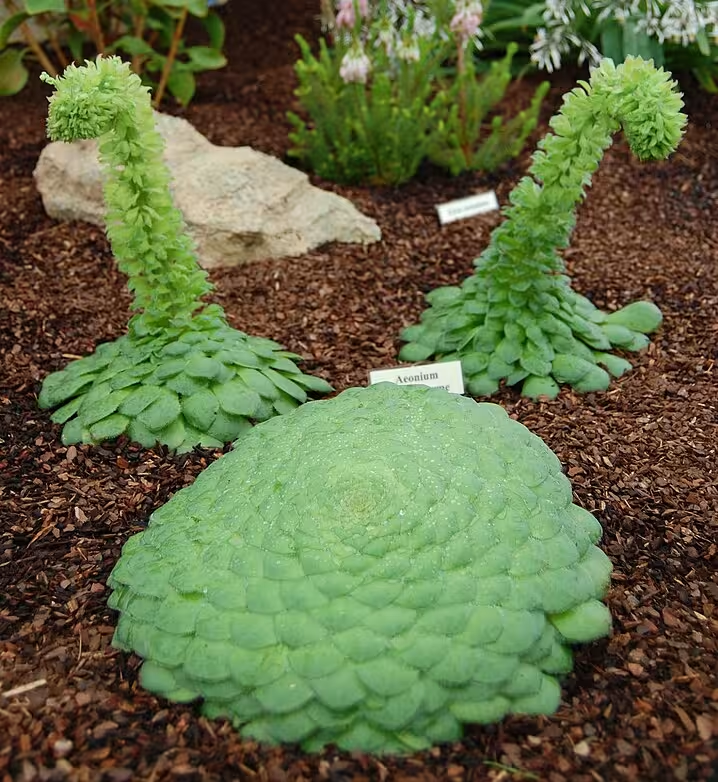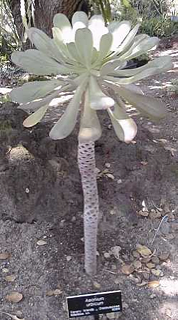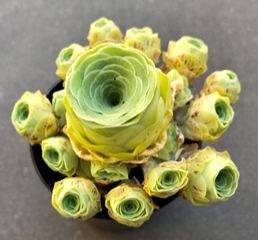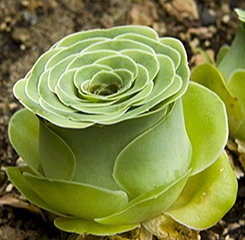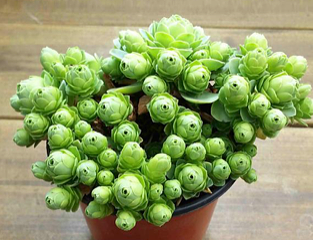Submitted by: Jim Tanner
Aeoniums originate from northern Africa and islands close by. They produce succulent rosettes of waxy leaves, generally at the end of naked stems. Depending on the plant, and the species, the leaves can have attractive variegations.
Each rosette die after blooming and setting seeds. In some species, since the plants do not produce any offsets or side rosettes, it will die completely after blooming. These species are propagated by seeds.
Most species are fall and spring growers, and should be watered and fed regularly at these periods. Fall is also a good time for rooting cuttings. When the plants are getting older, it is often a good idea to cut and replant the terminal rosettes to prevent legginess. This has the added benefit of preventing the plant from reaching the size at which it will bloom.
Greenovia was a small genus that has now been moved to Aeonium. They are native to the Canary Islands where they grow in the hills between 500 and 7500 feet elevation (150 to 2300 m). They grow on dry volcanic slopes, sometimes in the shade. Their leaves form succulent rosettes that close during periods of drought. They occasionally have a short stem.
They bloom in the spring and have yellow flowers and most species die after blooming.
Propagation is by seeds, offset for the plants that produce them, or leaf cuttings that are supposed to be tricky.
LATIN LOOKUP – Loquerisne Latine (Do you speak Latin)?
The meanings of latin plant names on this page – from http://davesgarden.com/guides/botanary/
- Aeonium [ee-OH-nee-um]
An ancient name used by Dioscorides for one of the species in the genus. - aizoon [AY-zoon]
Evergreen. - arboreum [ar-BOR-ee-um]
Tree-like. - aurea [AW-re-uh]
Golden flower. - davidbramwellii [day-vid-bram-WEL-ee-eye]
For 20th century British botanist Dr. David Bramwell. - diplocycla [dy-plo-SY-kla]
From the Greek diploos (double) and cyclos (circular, wheel). - Greenovia [green-OH-vee-uh]
Named for 19th century English geologist George Bellas Greenough. - haworthii [hay-WOR-thee-eye]
Named for Adrian Hardy Haworth, 19th century British botanist. - leucoblepharum [loo-koh-BLEF-ah-rum]
From the Greek leukos (white) and blepharis (eyelash); for the thin white leaf margins. - lindleyi [LIND-lee-eye]
Named for John Lindley, 18th century British botanist and taxonomist; professor of botany in London University. - sedifolium [sed-ih-FOH-lee-um]
With fleshy foliage. - simsii [SIM-see-eye]
For 19th century British physician and botanist Dr. John Sims. - spathulatum [spath-yoo-LAY-tum]
With a small spathe. - tabuliforme [tab-yoo-LEE-form-ee]
Formed like a tablet, flat shaped; also spelled tabulaeforme. - urbicum [UR-bee-kum]
Urban (belonging to cities or towns). - variegata [var-ee-GAY-tuh]
Variegated.
